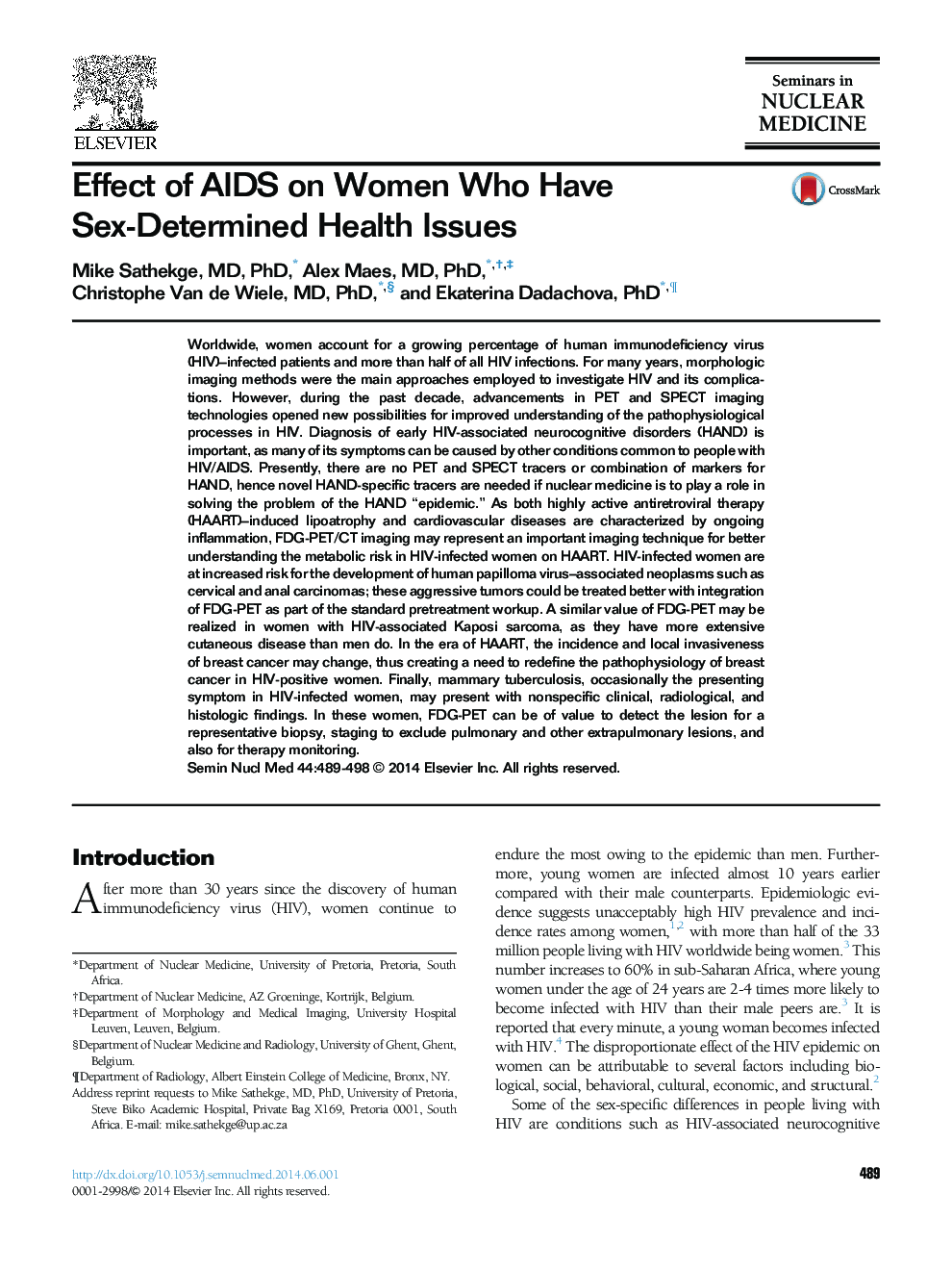| Article ID | Journal | Published Year | Pages | File Type |
|---|---|---|---|---|
| 4250891 | Seminars in Nuclear Medicine | 2014 | 10 Pages |
Worldwide, women account for a growing percentage of human immunodeficiency virus (HIV)–infected patients and more than half of all HIV infections. For many years, morphologic imaging methods were the main approaches employed to investigate HIV and its complications. However, during the past decade, advancements in PET and SPECT imaging technologies opened new possibilities for improved understanding of the pathophysiological processes in HIV. Diagnosis of early HIV-associated neurocognitive disorders (HAND) is important, as many of its symptoms can be caused by other conditions common to people with HIV/AIDS. Presently, there are no PET and SPECT tracers or combination of markers for HAND, hence novel HAND-specific tracers are needed if nuclear medicine is to play a role in solving the problem of the HAND “epidemic.” As both highly active antiretroviral therapy (HAART)–induced lipoatrophy and cardiovascular diseases are characterized by ongoing inflammation, FDG-PET/CT imaging may represent an important imaging technique for better understanding the metabolic risk in HIV-infected women on HAART. HIV-infected women are at increased risk for the development of human papilloma virus–associated neoplasms such as cervical and anal carcinomas; these aggressive tumors could be treated better with integration of FDG-PET as part of the standard pretreatment workup. A similar value of FDG-PET may be realized in women with HIV-associated Kaposi sarcoma, as they have more extensive cutaneous disease than men do. In the era of HAART, the incidence and local invasiveness of breast cancer may change, thus creating a need to redefine the pathophysiology of breast cancer in HIV-positive women. Finally, mammary tuberculosis, occasionally the presenting symptom in HIV-infected women, may present with nonspecific clinical, radiological, and histologic findings. In these women, FDG-PET can be of value to detect the lesion for a representative biopsy, staging to exclude pulmonary and other extrapulmonary lesions, and also for therapy monitoring.
